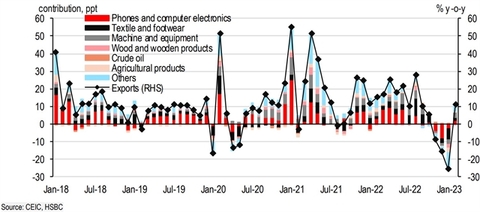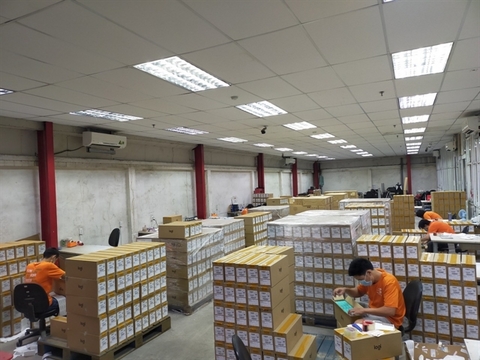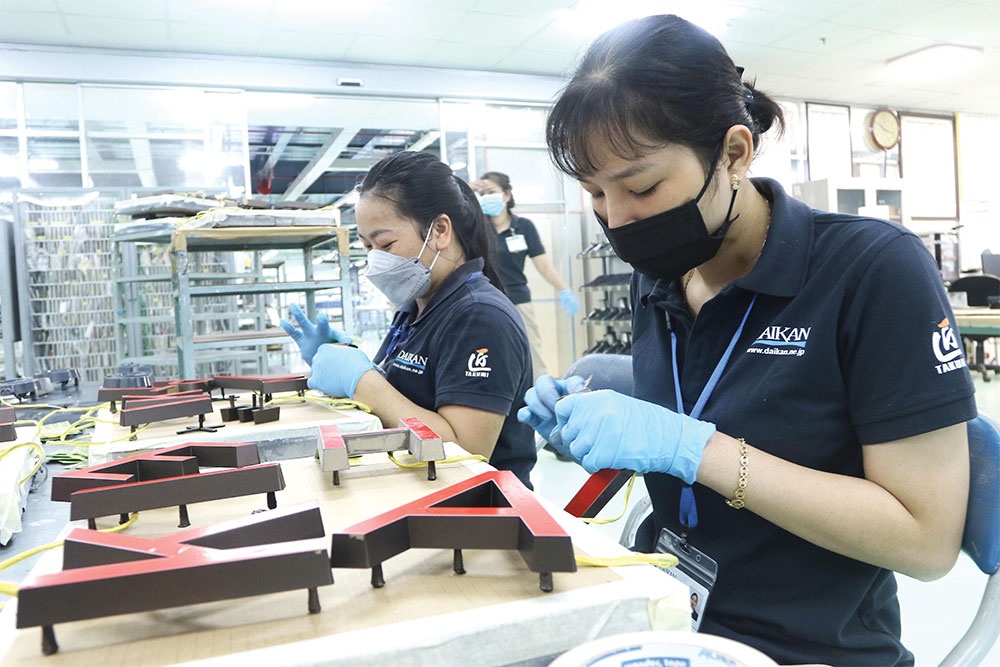Viet Nam faces opportunities despite challenges in 2023 : HSBC
Viet Nam faces opportunities despite challenges in 2023 : HSBC
With both January and February data in hand, Tet distortions can be accounted for. Despite a challenging start to 2023, there appears to be some silver linings for Viet Nam, HSBC reports.

Despite persisting external weakness, the first two months of data paints a less severe picture than initially feared. The manufacturing PMI returned to expansionary territory for the first time in four months. Meanwhile, trade also delivered some better-than-expected results.
Alas, it was not rosy, as exports fell 10.3 per cent year-on-year in the first two months this year, with ongoing broad-based weakness across major categories.
The report said Viet Nam has been on the frontline to suffer from an economic slowdown in the US, who has long been Viet Nam's largest exporting destination with a 30 per cent weight. That said, the only exception lied in phones and related parts, growing almost 8 per cent year-on-year YTD.
On the positive side, imports fell at a pace faster than exports, 16.1 per cent year-on-year YTD. This led to a trade surplus of US$2.3 billion, a much needed one as Viet Nam recovers from its two years of current account deficit. However, electronics imports continued to fall, with phones in particular slumping over 60 per cent year-on-year YTD. This suggests that the electronics cycle is unlikely to stage a quick turnaround soon, though recent global PMIs have pointed to some initial stabilisation.
Booming international tourism
On the domestic front, retail sales continued to register solid growth. While growth in goods moderated substantially, services, particularly tourism-related services, continued to grow, thanks to booming international tourism.
In February alone, Viet Nam welcomed around 933,000 foreign visitors, a record high since the start of COVID-19. Among them, mainland Chinese tourists edged substantially higher, reaching 55,000. While this was only 10 per cent of the pre-pandemic average of Chinese tourists, keep in mind that this was against the backdrop of limited flight frequency and an absence of group tours.
In addition, it is not just mainland China to watch for, but tourists from Korea, another key market with 30 per cent weight, have also held up firmly, with monthly inflows recovering to around 85 per cent of pre-pandemic level. While global trade of goods has slowed significantly, international tourism can be a supportive growth pillar, if some bottlenecks can be eased. That said, the road back to 2019's level might be lengthy, according to the report.
Inflation
While headline inflation moderated to 4.3 per cent year-on-year in February, below the State Bank of Vietnam's (SBV) 2023 inflation target of 4.5 per cent, some caution is needed after looking at the nuances. Inflation momentum remained strong, growing at 0.4 per cent month-on-month. Despite global commodity prices easing from their peaks last year, energy inflation remains elevated. For one, domestic oil prices continued to edge up higher, pushing up transport costs. Meanwhile, housing and construction material costs also rose substantially, partly reflecting higher gas and electricity costs.
Following a VND31 trillion loss by Vietnam Electricity in 2022, Viet Nam has raised its electricity price range from February 3 by double-digits (13.7-28.2 per cent) for the first time since 2017, which are key inputs for the Ministry of Industry and Trade to determine its retail prices for 2023. While inflation may have likely peaked in January, elevated imported price pressures need to be watched closely.
All in all, February's better-than-expected data do not change the challenges Viet Nam faces, but at least offer some optimism for the tide to turn. While external woes will likely continue in the near term, some recovery in tourism may partially cushion some headwinds. That said, inflation still needs extra attention, as price pressures remain elevated, the bank said.



















